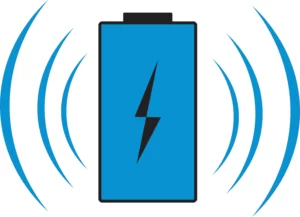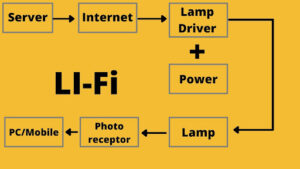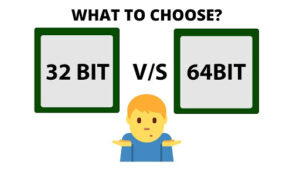
What is Li-Fi technology?
What is Li-Fi and How Does it Work?
Introduction
Li-Fi is called Light Fidelity. The technology was first unveiled in 2011 by Professor Harold Hoss of the University of Edinburgh. With this technology, he shows how we can also transfer data through light. This technology is much more advanced than Wi-Fi.
Li-Fi technology is based on Visible Light Communication technology. That is, if we provide constant power at the input to any light bulb, we also get constant power at the output. If we change the given power at the input, we will also notice the change in the given power at the output. And the faster the input of this change, the faster the output. And with this, we can communicate or transfer data. The TV remote also does some of this work, but it’s not Li-Fi technology.
In this technology, there is a lamp driver just like we connect to the router with an internet cable. Attached to it is a lamp through which the Internet becomes visible light. On the other hand, a photoreceptor device is attached to the computer or mobile phone, which receives the converted light signal in the form of visible light and provides internet to the computer or mobile phone.
Many people may think that if we go out of the area of light, we will no longer receive the Li-Fi signal. It’s somewhat accurate, but not exhaustive. Because we will actually get the signal back from one light source to another light source. We can also connect multiple devices at once through Li-Fi as well as Wi-Fi.
How Does Li-Fi Work?
Li-Fi works by using LED bulbs to transmit data through light waves. The data is encoded onto the light waves using a technique called intensity modulation. The LED bulbs are turned on and off rapidly, and the changes in the light intensity are detected by a receiver, which decodes the data. The speed at which the LED bulbs can be turned on and off determines the data transfer rate, which can be several gigabits per second.
Advantages of Li-Fi: –
1) Speed: – All the tests that have been done on the speed of Li-Fi so far have shown that its speed is available up to 100 gigabits per second. This does not mean that this technology will allow us to access the Internet at the same speed. Because the speed of the internet depends on the server and the route of the internet.
2) Bandwidth: – The bandwidth or frequency of light is 10,000 times higher than the radio frequency. As a result, with the help of Li-Fi, we can connect many devices at once and use them very easily. On the other hand, we can’t connect too many devices through Wi-Fi.
3) Security: – Li-Fi is much more secure than Wi-Fi. Because the Wi-Fi signal goes from one side of the wall to the other. As a result, if our Wi-Fi password is ever leaked, an unknown person can do illegal things. Li-Fi, on the other hand, is based on visible light communication technology, so this signal cannot go from one side of the wall to the other. For this reason, the signal will not be able to go to the other side of the wall.
4) Data Density: – One of the best benefits of Li-Fi is data density. Any Wi-Fi signal that we receive through the router is spread around. As a result, we do not always get the same speed of the Internet. But that doesn’t happen in Li-Fi. With this technology, we can easily focus the light source in a certain direction. As a result, we can use the internet very fast and without any loss.
5) Radiation: – Wi-Fi or mobile network works based on electromagnetic frequency. For this reason, many believe that mobile networks have a detrimental effect on the human body, which has not yet been accurately proven. Li-Fi on the other hand works based on Visible Light Communication technology. That is why there is no relation to radiation.
Disadvantages of Li-Fi: –
There are advantages and disadvantages to any technology, and Li-Fi is no exception. However, this difficulty is very low.
1) Range: – Like Wi-Fi, the range of Li-Fi is not very much. This is why even though its speed is high, we can’t use Li-Fi for long distances.
Applications of Li-Fi
Li-Fi has the potential to revolutionize the way we communicate and connect to the internet. Here are some potential applications of Li-Fi:
-
Indoor Navigation: Li-Fi can be used to provide indoor navigation services, as it can be used to create a network of interconnected LED bulbs that can guide people through a building.
-
Automotive: Li-Fi can be used to transmit data between vehicles, such as traffic information or weather updates.
-
Healthcare: Li-Fi can be used in hospitals to transmit patient data without the risk of interference from other wireless signals.
-
Aviation: Li-Fi can be used on aeroplanes to provide high-speed internet connectivity without the risk of interference from other wireless signals.
Conclusion
Li-Fi is a promising wireless communication technology that has the potential to offer several advantages over traditional Wi-Fi. It uses visible light to transmit data, which makes it more secure, energy-efficient, and faster than Wi-Fi. While Li-Fi is still in its early stages of development, it has the potential to revolutionize the way we connect to the internet.
FAQs
-
Is Li-Fi faster than Wi-Fi? Yes, Li-Fi can transmit data at much higher speeds than Wi-Fi.
-
Is Li-Fi more secure than Wi-Fi? Yes, Li-Fi is more secure than Wi-Fi because light waves cannot penetrate through walls.
-
What are the potential applications of Li-Fi? Li-Fi has the potential to be used in indoor navigation, automotive, healthcare, and aviation.
-
How does Li-Fi work? Li-Fi works by using LED bulbs to transmit




